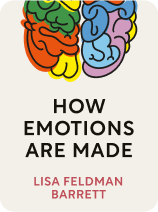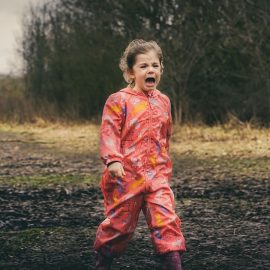

This article is an excerpt from the Shortform book guide to "How Emotions Are Made" by Lisa Feldman Barrett. Shortform has the world's best summaries and analyses of books you should be reading.
Like this article? Sign up for a free trial here.
What does emotional development mean in early childhood? Why is emotional development so important for children, according to psychology?
Lisa Feldman Barrett’s book, How Emotions Are Made, explains a new theory of emotions, according to Barrett’s background in neuroscience and psychology. Barrett’s new theory of constructed emotions impacts the meaning and importance of emotional development for young children.
Read on to find out the meaning of emotional development in early childhood, according to Barrett’s new theory.
It Starts When We’re Babies
Barrett asserts that emotions don’t just “exist” somewhere in our brain or body; rather, emotions are made, and emotion concepts are learned. What is an emotion concept? Emotion concepts mean social and cultural understandings about specific emotions that we develop throughout our lives, starting when we’re infants. This means that our brain relies on these concepts to help it make emotions during emotional development.
When you’re a baby, Barrett explains, you receive a vast amount of sensory input that you don’t understand, and you start to group it into categories. You may think (without yet having the words to verbalize your thoughts), “These smells mean nursing; these features mean my mother’s face; these feelings in my stomach mean hunger.”
Once you begin learning words, you have the ability to categorize not just objects and feelings, but mental concepts, too. A word can tell you, for example, that a bunch of people who look and act differently—your mother, father, aunt, and step-sister (and maybe also your neighbor and your mom’s best friend)—all have a similarity that is mental, meaning they are “family.”
As you grow, your parents or caregivers teach you that a wide variety of movements, sounds, or behaviors can represent a single emotion. For example, during emotional development, you may see someone hunched over with their head in their hands, contorting their face while crying loud tears, or staring out the window, and be told in each situation that all of these very different things mean one emotional concept: “sadness.” Perhaps you feel unpleasant inside when you lose your favorite toy, and you are told by your caregiver that this, too, represents “sadness.” All of these experiences are categorized in your brain as a single emotion concept.
In addition, you learn that the same sounds and movements—crying, for example—can mean different emotions, such as anger, sadness, or happiness.
Emotion concepts initially come from your caregivers, and then from social environments such as school, friends, and your broader culture. They are a form of cultural knowledge.
Early Childhood Brain Development and Emotion
The development of the brain in early childhood is important to learning the meaning of emotion concepts, just as it’s important to all kinds of future learning, health, and success. This is largely due to how fast the brain grows starting before birth and continuing for a child’s first eight years. During this time, the brain rapidly forms new synapses (connections between brain cells, or neurons).
Some experts believe that emotional development begins at birth, meaning that the first five years of emotional development are among the most crucial. Parents and caregivers can support their child’s brain growth and emotional health by speaking with them, playing with them, and responding empathically to their needs. Children who lack these supports, especially those who experience the emotional turmoil of chronic stress or trauma, can experience lifelong negative effects, as Bruce D. Perry and Oprah Winfrey explain in What Happened to You?.
In fact, research has shown that Adverse Childhood Experiences (ACEs)—potentially traumatic experiences that occur in childhood—are linked to an increased risk of developing serious diseases and behavioral challenges, such as cancer and alcoholism. Examples of ACEs include abuse, neglect, and household dysfunction such as substance abuse, mental illness, or having a family member who is in prison.

———End of Preview———
Like what you just read? Read the rest of the world's best book summary and analysis of Lisa Feldman Barrett's "How Emotions Are Made" at Shortform.
Here's what you'll find in our full How Emotions Are Made summary:
- A deep dive into what emotions really are and where they come from
- How some cultures have different emotions than others
- The difference between feelings and emotions






